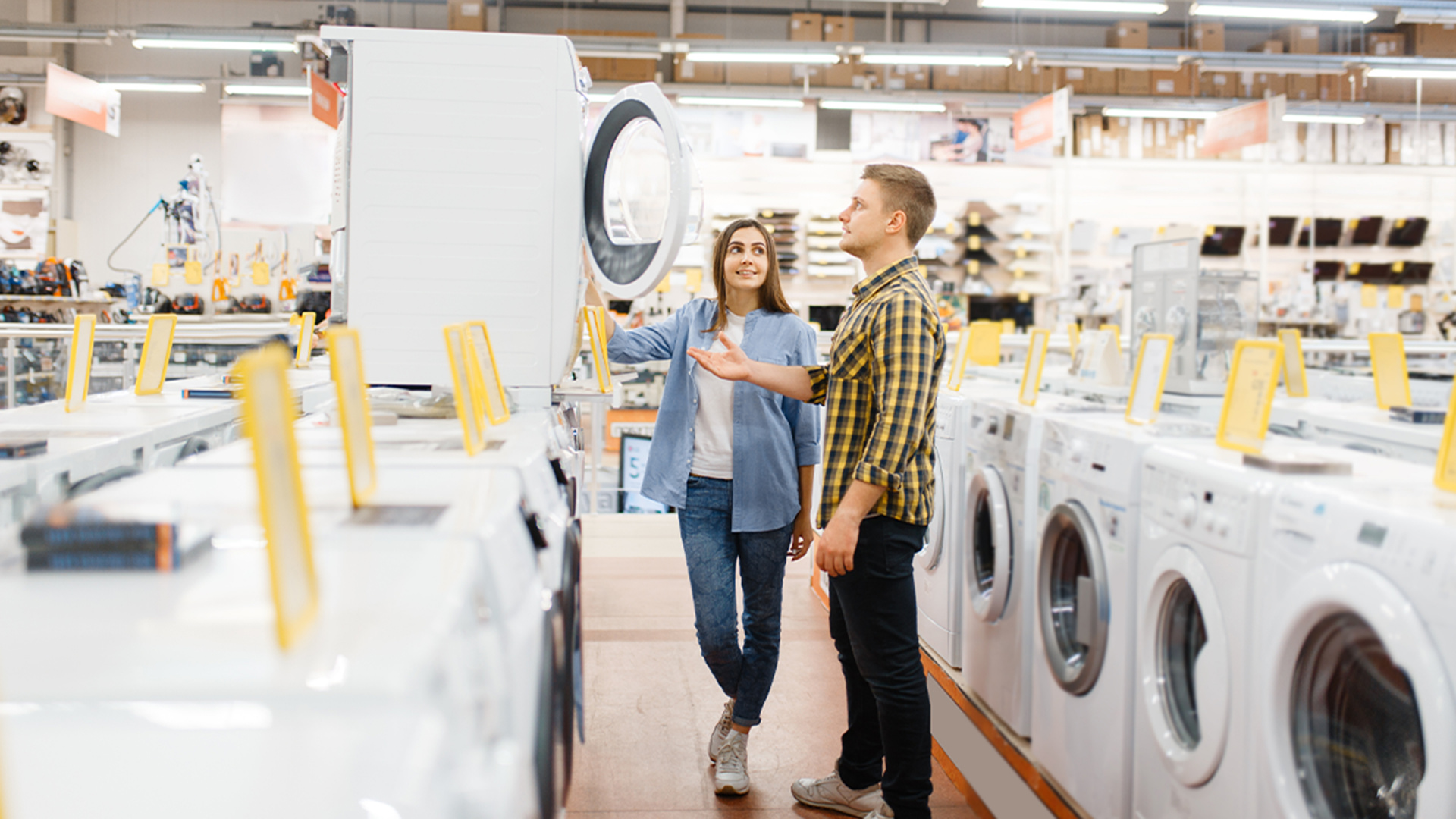In the market for new appliances? Buying the right one doesn’t have to be overwhelming or confusing. Knowing what to look for can help you make the best and most energy-efficient choice for you and your family. Here are some helpful pointers to guide you in the right direction.
Labels, labels everywhere
You may have noticed that appliances in a store’s showroom have multiple labels. But don’t panic – let us tell you what they really mean.
EnerGuide
All appliances, regardless of their efficiency, have an EnerGuide label. This label lets you know the appliance meets the minimum levels required by Canada’s energy efficiency regulations. It also estimates how much energy the appliance uses in a year, and compares its energy performance against similar models.

ENERGY STAR®
ENERGY STAR is an internationally-recognized program that identifies the most efficient products available for purchase. If you notice that an appliance has a blue ENERGY STAR label, you can be confident that it’s in the top 10 to 30% of its class in energy performance.

ENERGY STAR Most Efficient
The ENERGY STAR Most Efficient designation is awarded every year to products that are considered to be the “best of the best” in terms of energy efficiency and innovation. These models are generally in the top 15% of their class for energy performance.

The “second price tag”
An appliance’s price tag only tells part of the story. It’s important to consider the “second price tag,” or the cost to operate the appliance over its lifetime. Although an energy-efficient product might cost more at the register, it’ll likely save you more money over time than a less expensive and less efficient model.
Tips for buying an energy-efficient fridge
- Buy an ENERGY STAR certified fridge. Looking for that label is the easiest way to choose an energy-efficient model.
- Choose the right size. The larger the fridge, the more energy it will use. Decide how much room your family needs and don’t go any larger than necessary.
- Consider buying a fridge with a top-mounted freezer. These fridges tend to use less energy than side-by-side or bottom-freezer models.
- Decide if you really need features like a cold water or automatic ice dispenser. These features increase the upfront cost of the fridge as well as its energy consumption.
Tips for buying an energy-efficient laundry pair
- We’ll say it again…buy ENERGY STAR!
- Consider buying a front-load clothes washer – these tend to use less water than top-load models. This means clothes that come out of a front-load washer won’t need to spend as long in the dryer, saving you even more energy and money.
- Look at the clothes washer’s Integrated Modified Energy Factor (IMEF). A higher number means the washer uses energy more efficiently when washing clothes, heating the water, and sitting on standby.
- Look at the clothes dryer’s Combined Energy Factor (CEF). The higher the CEF, the more efficient the dryer is.

